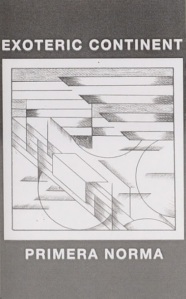 Aphex twin: Computer Controlled Acoustic Music Pt. 2
Aphex twin: Computer Controlled Acoustic Music Pt. 2
Warp Records (2015)
The internet went into meltdown when a blimp appeared over London bearing the Aphex Twin logo……blah blah blah. Well, here’s the follow up to his first album in 14 years. Computer Controlled Acoustic Music Pt. 2 might not be a proper ‘follow up’ – in fact it’s a collection of odds, ends and experiments also collected over the previous fourteen years – but that doesn’t make it any less cohesive.
It may not be as musical as Syro. In fact it sounds completely different to its predecessor. It may not have the downright creepy weirdness of his earlier works, but what it doesn’t lack is funk. Yes, funk. You might never have associated the word ‘funk’ with Apex Twin, but it’s here. Clear as day. It’s in the head-nodding, old-school hip-hop rhythms. It’s in the bouncy, acoustic bass lines. It’s in the percussive clunk of the live instruments all of this is based on.
Those percussive vibes are what separates Computer Controlled Acoustic Music Pt. 2 from all the other ‘funky’ instrumental music that exists in the 2014. The instruments might be acoustic but they sound ‘prepared’ in a subtle nod to the sonic world of John Cage and his ilk. The pianos are clunky and stunted. The snares are all fucked up and tinny. The beats are sprinkled with tings, plonks and random off-shoots of sound. I’m not naive enough to think that Richard D James actually interfered with all thee acoustic instruments before recording them. I know full well that he’s a studio boffin who must have spent weeks twiddling knobs to get this recording sounding as it does. But that’s the intrigue; like the 30 second interludes of super-speed piano lines that sound ‘real’ even though they could only be played by a robot. And if you can accept Computer Controlled Acoustic Music Pt. 2 on its own, outside of the all baggage that comes with the second Apex Twin record in 14 years, it’s fucking fun.






![[PHYSICS]](https://evolkweenthemusical.files.wordpress.com/2013/05/physics.jpg?w=300&h=300)


